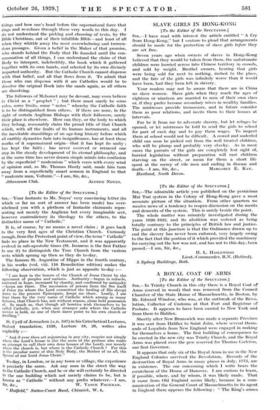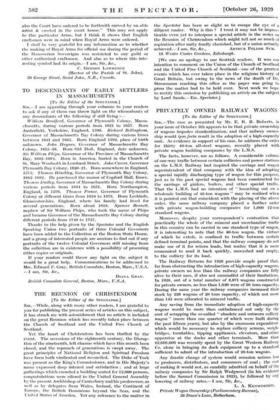A ROYAL COAT OF ARMS
[To the Editor of the SPECTATOR.]
Sin,—In Trinity Church in this city there is a Royal Coat of Arms (carved in wood) that was removed from the Council Chamber of the State House of Massachusetts, in Boston, by Mr. Edward Winslow, who was, at the outbreak of the Revo. lution, Collector of Customs at that Fort and Registrar of Probate. It appears to have been carried to New York and from there to Halifax.
Shortly after New Brunswick was made a separate Province it was sent from Halifax to Saint John, where several thous- ands of Loyalists from New England were engaged in making for themselves a home. The first building of consequence to be erected in the new city was Trinity Church, and the Royal Arms was placed over the pew reserved for Thomas Carleton, our first Governor.
It appears that only six of the Royal Arms in use in the New England Colonies survived the Revolution. Records of the destruction of Royal Arms in many places in July, 1775, are in existence. The one concerning which I write bears the escutcheon of the House of Hanover. I am curious to learn, if possible, where, and by whom, it was likely made. That it came from Old England seems likely, because in a com- munication of the General Court of Massachusetts to its agent in England there appears the following : "The King's armes also the Court have ordered to be forthwith carved by an able artist & erected in the court house." This may not apply to this particular Arms, but I think it shows that English craftsmen were in mind when Royal Arms were ordered.
I shall be very grateful for any information as to whether the making of Royal Arms for official use during the period of the Hanoverian Sovereigns was restricted to any guild or other authorized craftsmen. And also as to where this inte- resting symbol had its origin.—I am, Sir, &c.,
C. GORDON LAWRENCE
(Rector of the Parish of St. John). 50 Grange Street, Saint John, N.B., Canada.



















































 Previous page
Previous page